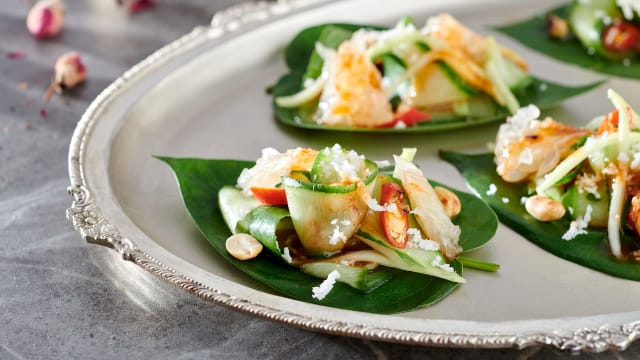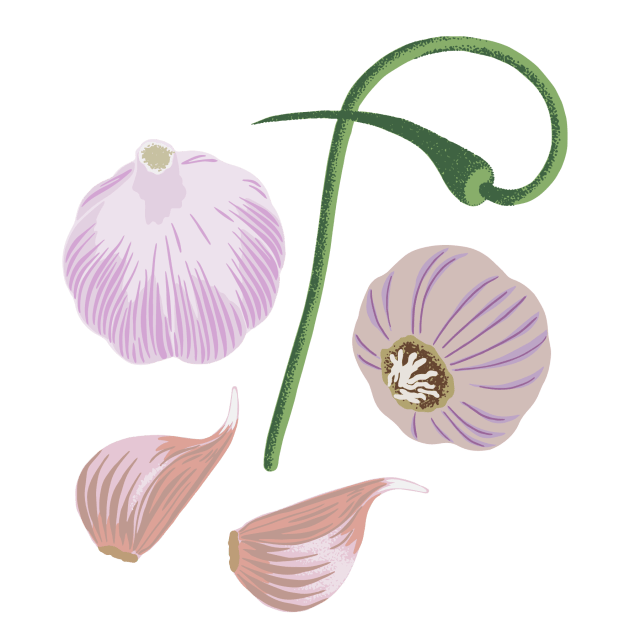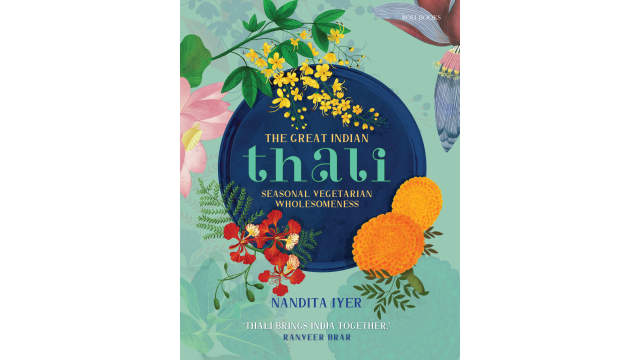
Vegetarian Dhansak

Vegetarian Dhansak
Description
In many cultures, food is central to mourning rituals, offering a way to honor loved ones. In the Parsi community of India, dhansak with mutton is a traditional bereavement dish. This vegetarian version, rich in lentils, vegetables, and aromatic masalas, provides warmth and nourishment. Lentils offer protein and gut-friendly fiber, while pumpkin and eggplant add vitamins, antioxidants, and essential nutrients.
Ingredients
- 1/3 cup (70 g) tur dal (yellow split pigeon peas) soaked for 20 minutes
- 2/3 cup (140 g) masoor dal (split red lentils) soaked for 20 minutes
- 3 ½ cups (400 g) yellow pumpkin, cut into cubes
- 2 (150 g) small eggplants, cut into quarters
- 2 cups (100 g) methi leaves (fenugreek greens), finely chopped
- 1 cup (100 g) spring onions, bulbs discarded, and stalks finely chopped
- 5 cups (1.2 L) of water for pressure cooking
- ½ tsp turmeric powder
- 1 Tbsp salt
- 1 to 2 Tbsp ghee, or cold-pressed seed or vegetable oil for a vegan version
- 1½ -inch-long piece of ginger, minced or grated
- 6 garlic cloves, minced or grated
- 2 (120 g) medium onions, sliced thin
- 4 (200 g) medium ripe tomatoes, roughly chopped
- 1/2 cup (200 ml) tomato purée
- 2 Tbsp dhansak masala (see Step 2 for instructions to make a homemade version)
To Make Dhansak Masala (spice blend)
- 6–7 dried (10g) Byadgi chiles
- 1 tsp cumin seeds
- 1 Tbsp (5 g) coriander seeds
- 6 black peppercorns
- 2 green cardamom pods
- 2-inch cinnamon stick
Directions
-
Step 1
Drain and add the lentils to a large pot. Add pumpkin, eggplant, methi leaves, spring onions and 4 cups of water. Mix in the turmeric powder and half the salt. Cook the lentils and vegetables over medium-low heat, adding more water as needed, until softened — about 45 minutes. Alternatively, you can pressure-cook just the lentils with 3 cups of water on high heat to the first whistle, then simmer for an additional 10 minutes. Release the pressure, open the lid, and mash the lentils with a ladle. Then add the vegetables, turmeric powder and salt, top up with 1 cup of water, and cook on high heat to the first whistle. Then lower the heat and simmer for 5 more minutes before turning off the heat and allowing the pressure to release before opening the cooker. -
Step 2
To make the dhansak masala (spice blend): in a pan, on medium heat, toast the chiles, cumin seeds, coriander seeds, peppercorns, green cardamom pods, and cinnamon stick for 3 to 4 minutes. Allow the spices to cool, then grind to a fine powder. This makes about 2 tablespoons, or 30 grams, needed for this recipe. Store the rest in a glass jar in a cool, dry place. Note: You can also scale the recipe to make a bugger batch to season other dishes. -
Step 3
To make the onion-tomato masala: Heat the ghee in a deep, heavy bottom kadhai or pan. Add the ginger, garlic, and onions and sauté on medium heat for 7 to 8 minutes. Once the onions turn golden, add the chopped tomatoes, the rest of the salt, and cook on high heat while stirring continuously for about 3 to 5 minutes, until the tomatoes soften. Mix in the dhansak masala powder, add the puréed tomato, and cook on medium-high heat for 3 to 4 minutes, stirring often. -
Step 4
Add the tomato-onion masala to the lentils and vegetables. Using an immersion blender, purée the dhansak. Simmer over low heat for 10 minutes to marry together the flavors. Add water if needed to achieve a soupy consistency, and adjust the salt to taste. Serve hot.
To make a simple dhansak masala spice powder, toast 6 to 7 dried Byadgi chiles, 1 tsp cumin seeds, 1 Tbsp coriander seeds, 6 peppercorns, 2 green cardamom pods, and a 2-inch-long cinnamon stick on a pan over medium-low heat for 3 to 4 minutes. Allow the spices to cool, then grind to a fine powder. This makes about 2 tablespoons, or 30 grams, needed for this recipe.
Try it with: Parsi brown rice, or plain steamed rice and a kachumber (a Parsi-style salad of onion, tomato, and cucumber) on the side.
About the author
More by Nandita Iyer












